David Nobody’s Colorful and Creative Series Brightens Up US Culture
All images by David Nobody. Used with permission.
“I am interested in images that look like they were photoshopped but are not—the mix of real and unreal,” says multi-disciplined artist, David Nobody. He adds, “I have been fascinated with in-camera creativity in Resemblagé.” He’s referring to his on-going series, which takes an imaginative look at pop culture in the United States, as well as society’s fixation with social media and the self. We take a closer look at a colorful and eccentric set of images, while learning more about Resemblagé and the artist behind it.
Phoblographer: Where did you get the initial inspiration for this series?
David Nobody: A few different strands of influence inspire the current body of work: The radical change in technology in the last decade, specifically phones and social media and how this has drastically altered reality and our human self-perception. My influences include animators on Instagram that popped up over the years- the way they quickly adapted to wildly reframe representation of the human form. Also, my influences include the wider community of Instagram and many artists that I have become colleagues with.

I am shaped by my 30-year deep history as a multi-faceted social sculptor, underground figure and collaborator. I am influenced by art history and the history of performance art in particular. I have sought to insert my performances right in the middle of the whole beautiful fucking mess of it all and record it in this body of work.
Phoblographer: The images are incredibly detailed, in many ways, complex; how did you design each frame?
David Nobody: For my show with Unit London’s platform series, I only had only six weeks scheduled to produce a new body of Resemblagé (the combination of the words resemble and collage.) One-piece led to the next, starting with Pretzel Logic and ending with the final piece, Gateway To My Grid. I make my pieces by improvising and developing on camera with bizarre items that I collect from the garbage and junk stores or Craigslist. I’m a bit of a hoarder at times.
I work by the stream of consciousness and analyze the recordings to improve the piece. I work by how I feel from the props and the self-transformation of my image- the pieces you see were made in a very tumultuous time in America- I hope they reflect that. I fully develop and realize the whole Resemblagé myself and then for this particular series, I brought in my friend and pro photographer Anna Yatskevich to shoot the finals.
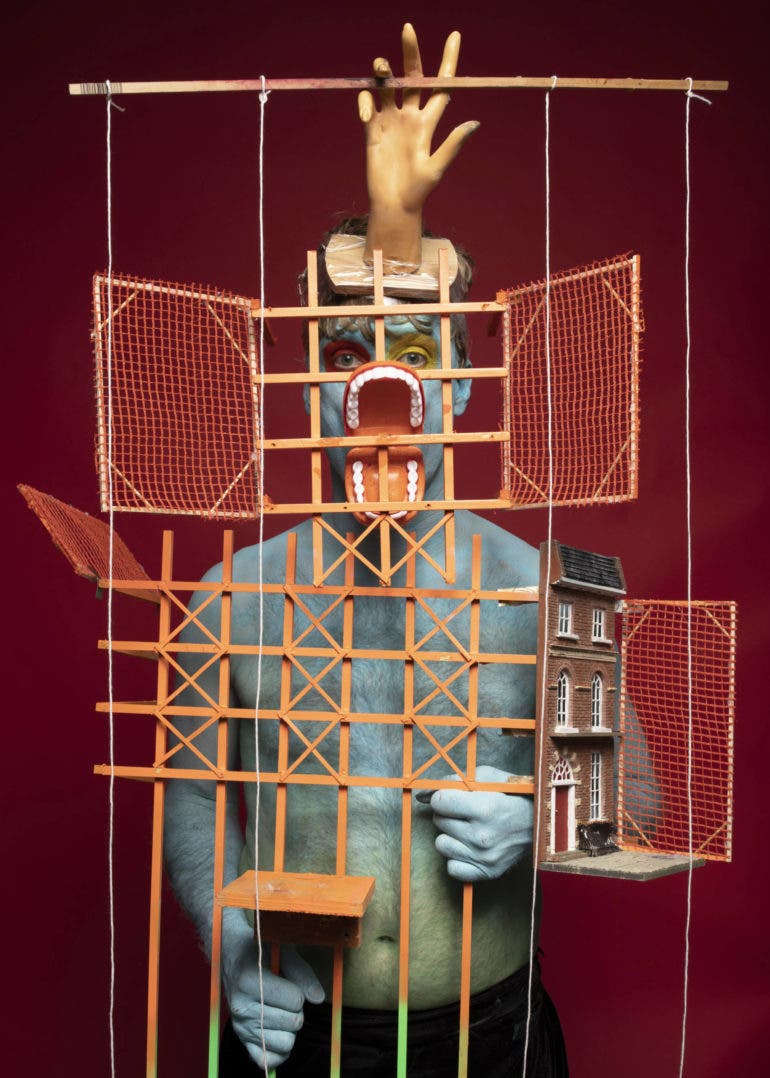
Phoblographer: The press release reads, “…explores the dark side of American pop culture and politics.” In your words, what does the dark side look like, and how did you want to communicate that through this particular section of your work?
David Nobody: I show the tip of the dark side of the iceberg. Behind the sugar-coated Pop Culture of America lies full-on trauma. If you are sentient and something of an outsider, you can feel the shit out of it. I always aim to deconstruct it by physically wearing the problems in my work. I inject the poison into my veins, to force a confrontation and reckoning with myself and the viewers. Although I may not influence the present but only perhaps shock it, to me, my work is a personal time capsule of what life was like inside the machinery of an Empire, for the future.
Phoblographer: You started this series back in 2015. Why did you feel now was the right time to bring it to a close and put it out into the world?
David Nobody: I am not bringing it to any closure, nor do I intend to. I have exhibited the work a bunch of times previously with solo presentations at MOCA Tucson in 2018. Contra Gallery in 2019 and Andrew Edlin Gallery in 2020. I have published most of what I have made on Instagram. This body of Resemblagé is in evolution- and will continue to be!
Phoblographer: As part of your press release, you use a quote from Johnny Rotten. “The only way to deal with the garbage is to wear the garbage.” Would you describe yourself as anti-establishment? And is it important for you to represent your values through your art?
DN: Yes, I am Anti Establishment. I grew up being punk rock, but like many in my generation, I also am a Poser! I deeply distrust authority. I embed my hypocrisy between real and fake in the conflict of values implicit in my work. I am processing reality, not dictating it. I make art because I have no fucking idea what reality is exactly. I know I need to keep wearing the garbage, it’s a stinky job that I truly love.
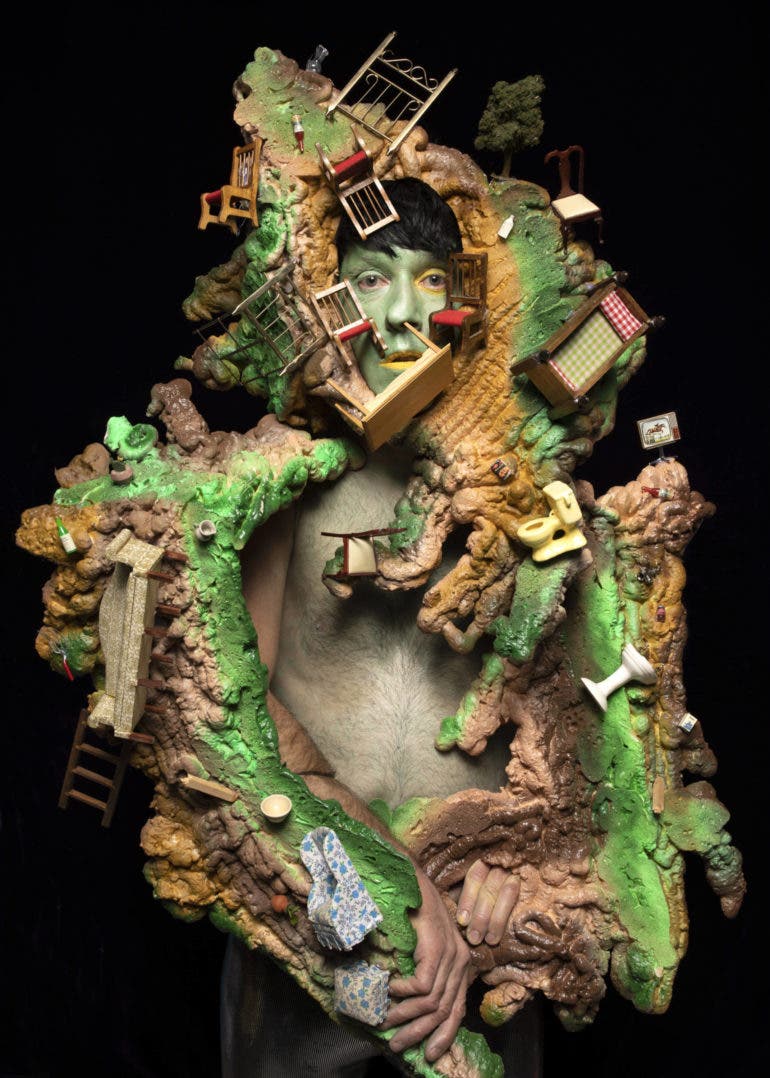
Phoblographer: You’re a multimedia artist. If we focus specifically on photography, what’s your relationship like with the craft and how much value does it have to you compared to other means of creation?
DN: Photography is a persnickety medium that I discovered over years of trial and error. I am interested in still images as a type of visual emotion embedded in a slice of time. I have come a long way in five years starting with just an iPhone in 2015 and now working with a professional DSLR setup with strobes etc. The photographer in me has ‘grown-up,” but my impulses and immediacy are still totally savage, still very urgent.
Photography is central to documenting a Resemblagé. I am interested in recordings (like photography) taking over our way of seeing reality- the photograph of something is more important than the real thing in our dystopian future.
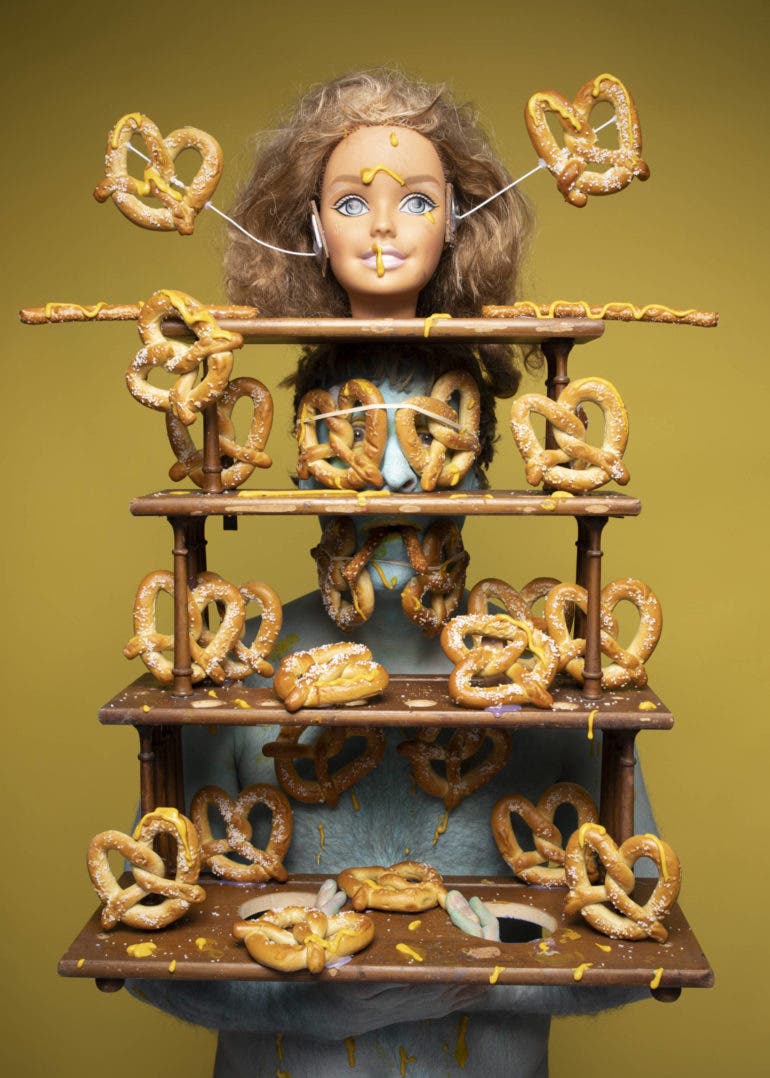
Phoblographer: Of course, art is personal and subjective. But with Resemblage, what are you hoping viewers take away from the series?
DN: I hope that the viewer can project themselves into the situation that I, as David Nobody, is portraying. I think the medium of the internet has deeply enhanced the fantasy life of the viewer and drastically altered how we see images. I don’t want you to see Nobody- I want you to imagine yourself in the work, to bring your own emotional baggage into the situation. I am to lift up, expose, and empower by questioning ourselves.
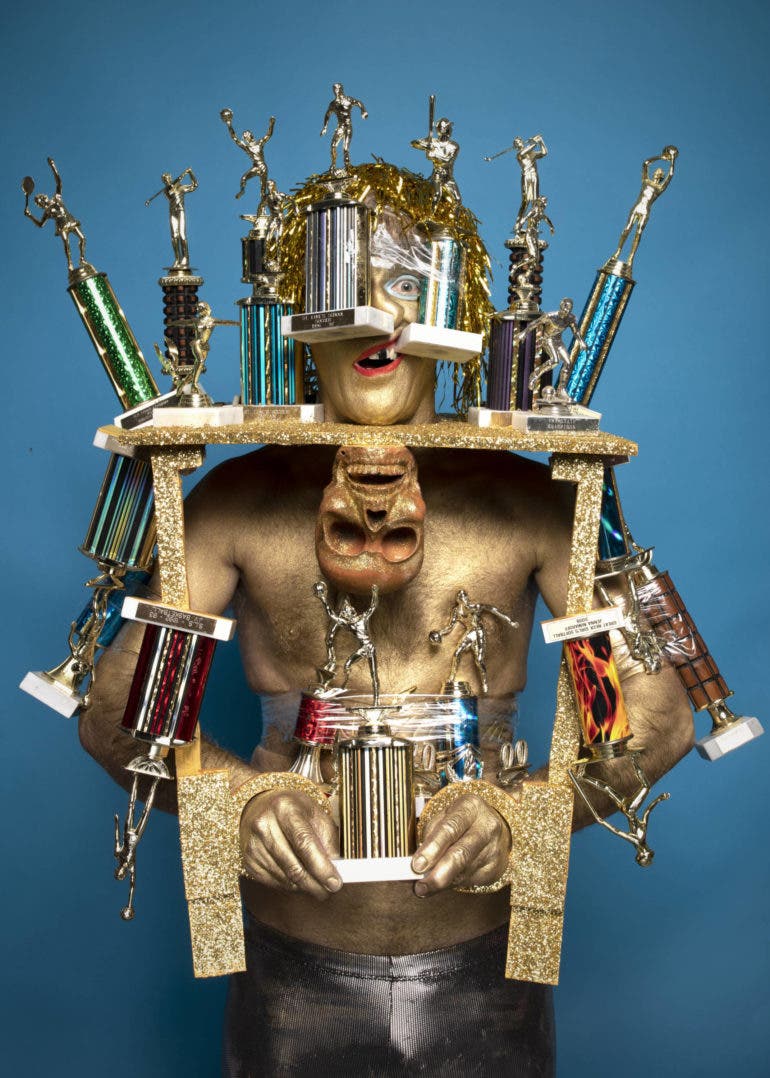
Phoblographer: A section of the proceeds from the exhibition goes to the Campaign Against Hunger. Please tell us why this was the organization of your choice.
DN: It’s a wonderful charity that supports people, especially kids that don’t have enough food to eat in Brooklyn’s poorest neighborhoods. I live in Brooklyn. Waste has sometimes been the subject of my work, and in the past, I have used food in my Resemblagé. (I read that 40% of food is wasted in the USA) I wanted to give back and am happy to have chosen The Campaign Against Hunger.
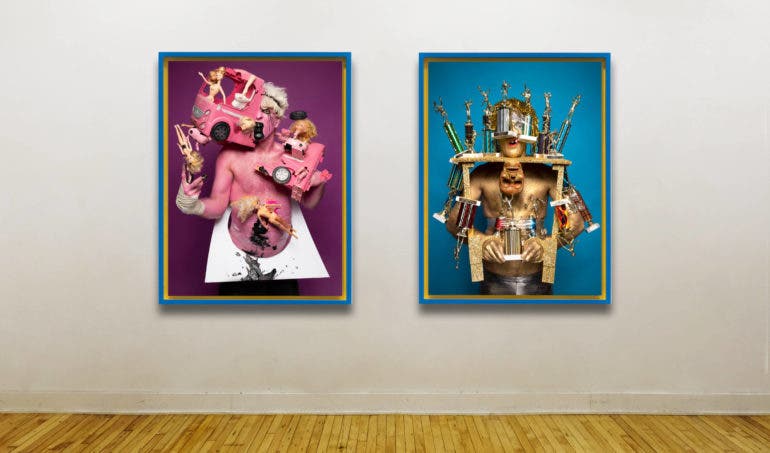
You can see more of David’s work by visiting his website.